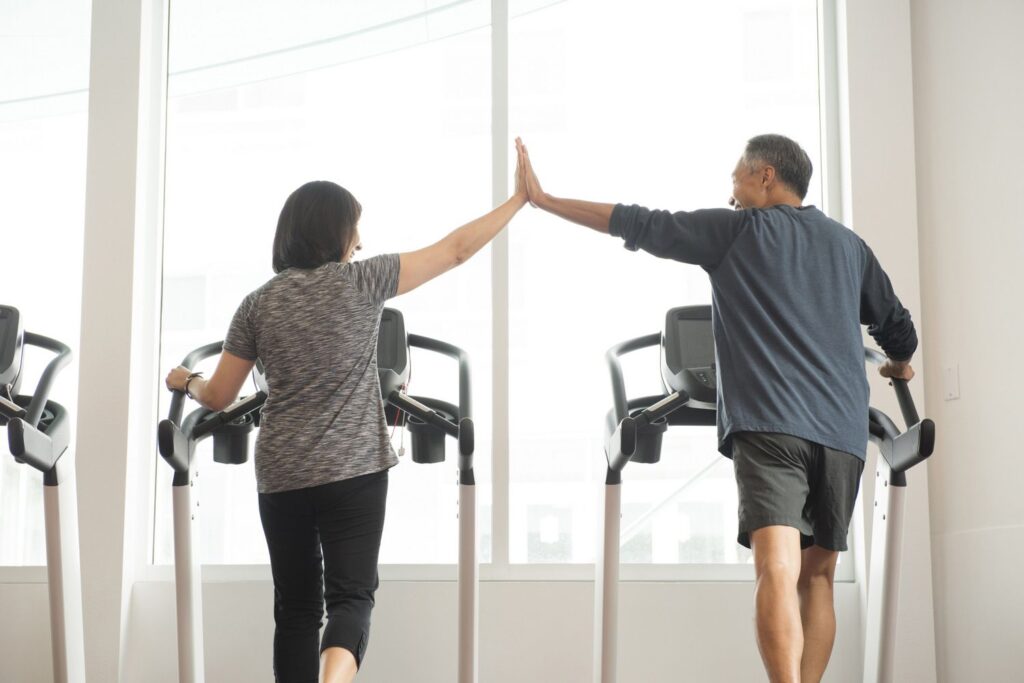Cardiovascular health is essential for everyone, but it’s even more critical for people trying to lose weight. Exercising between 8 and 11 in the morning improves cardiovascular health more than exercising at night or lunchtime.
A study recommends that people who exercise in the morning enjoy cardiovascular benefits the most.
- A new study investigates the impact of exercising at various times of the day on preventing cardiovascular disease and stroke.
- According to the study, persons who exercise in the morning have the most considerable risk reduction. It is especially true for women.
- According to the study, the ideal day to exercise is around 11 am.
A new study reveals that a specific time of day—typically early in the morning—is associated with reduced risk of cardiovascular disease (CVD) and stroke.
According to the study, physical activity among adults between 8 and 11 am was most effective in reducing the risk of cardiovascular disease and stroke. Compared to exercise at other times of the day.
The association was equally applicable to people who described themselves as morning or evening. The researchers also discovered that people who exercised early and late in the morning, rather than mid-morning, benefited the most.

Dr. Paul Arciero, professor of human physiological sciences at Skidmore College in Sarasota Springs, NY, explains why the study is so compelling:
Experts from the University of Texas Southwest Medical Center conducted this study, which included about 86,000 participants over a six-year follow-up period. The study examined how the time of day you exercised affected your chance of heart disease, a heart attack, and a stroke.
Dr. Asad R. Siddiqi remarked to Medical News, “I think this research does a terrific job of attempting to address some of the main issues in physical activity intervention research.” “The study’s magnitude, generality, and follow-up period.”
Dr. Siddiqi and Dr. Arciero, assistant professors of clinical physical medicine and rehabilitation at Columbia Medical University Center in New York, were unrelated to the study’s development.
The study publishes in the European Journal of Preventive Cardiol.
The study’s method of tracking exercise patterns
The researchers examined 86,657 people’s data from the UK Biobank for a study. The individuals were an average age of 62 and ranged in age from 42-78. 58% of the individuals in the study were women.
Dr. Siddiqi added that this is only a small study and more research needs. “We always need to be aware of how these interventions. In this case, putting an accelerometer, alter patient behavior; I’m speaking about the Hawthorne Studies and other things, according to Dr. Siddiqi.”
What has to be determined is if a 1-week tracking period accurately predicts healthy behaviors for the original study’s 6 to 8-year follow-up duration.
Dr. Arciero, however, said that she didn’t consider this a problem. Because “an accelerometer measurement over seven days is considered a representative period to evaluate overall physical activity levels.”
Dr. Gali Albalak, from Leiden University Medical Center in the Netherlands. Says that the study’s results show that people’s activities have not changed over time. Yet, an accelerometer can objectively measure physical activity without recall. Or other bias that plays a role in questionnaire-based physical activity information.
In any case, Dr. Siddiqi added, “in general, as the study population was largely middle-aged and older adults with presumed formed behavioral habits and patterns, it’s unlikely that these habits would change significantly over time.”

Sweet spots were 8 and 11 in the morning.
After six years, 2,911 study participants developed coronary artery disease, and 796 had had a stroke.
Exercise at 11 am resulted in 16% less risk of developing CAD and 17% less risk for stroke. Also, it was 21% less likely to have an ischemic stroke than the rest of the study’s reference group.
Early exercise reduces cardiovascular disease risk in 11% of people.
Men benefited less from morning exercise than women. Still, when researchers calculated women and men separately, it turned out women helped considerably more from morning exercise.
Women who exercise in the morning reduce their risk of cardiovascular disease by 22% and 24%, respectively.
A study published by Dr. Arciero’s laboratory found that women that exercised in the morning reduced their systolic and diastolic blood pressure significantly more than those exercising at night.
Dr. Albalak reports that their data suggests morning exercise is beneficial for women to improve cardiovascular health and lower CVD risk. Another potential answer for the disparity in findings is that the anatomy of cardiovascular disease differs between sexes.
More research is needed before anyone can make recommendations for men or women.
Cardiovascular Health Excercise Circadian Clock Trigger
Although “this was an observational study, we cannot claim anything about the causal effect of physical activity scheduling on our cardiovascular health,” Dr. Albalak emphasized that the study results are consistent with earlier research conducted by her team.
In 207 healthy but sedentary older persons, “we already were able to determine that morning physical activity that connects with metabolic health (BBMI), glucose levels, and insulin resistance,” she added.
“Physical activity, like food intake and light exposure, is also an important ‘Zeitgeber,’ or circadian clock trigger,” Dr. Albalak explained.
“This means that we can calibrate our biological clock and circadian rhythms with each other and our environment [the day and night cycle of the earth] using these behavioral aspects,” she added.
“According to many research, dining past 8:00 pm or being exposed to intense light at night may hurt our biological clock.”
Getting physically active in the morning can be an excellent time to set your clock.” Dr. Siddiqi stated:
“Any time of day is preferable to nothing because, for the majority of individuals, we are just attempting to establish the routine of physical activity.”
As a general rule, I make exercise promotion simple and flexible to increase adoption, acknowledging that timing exercise is a fine adjustment with practical aspects and limitations.


